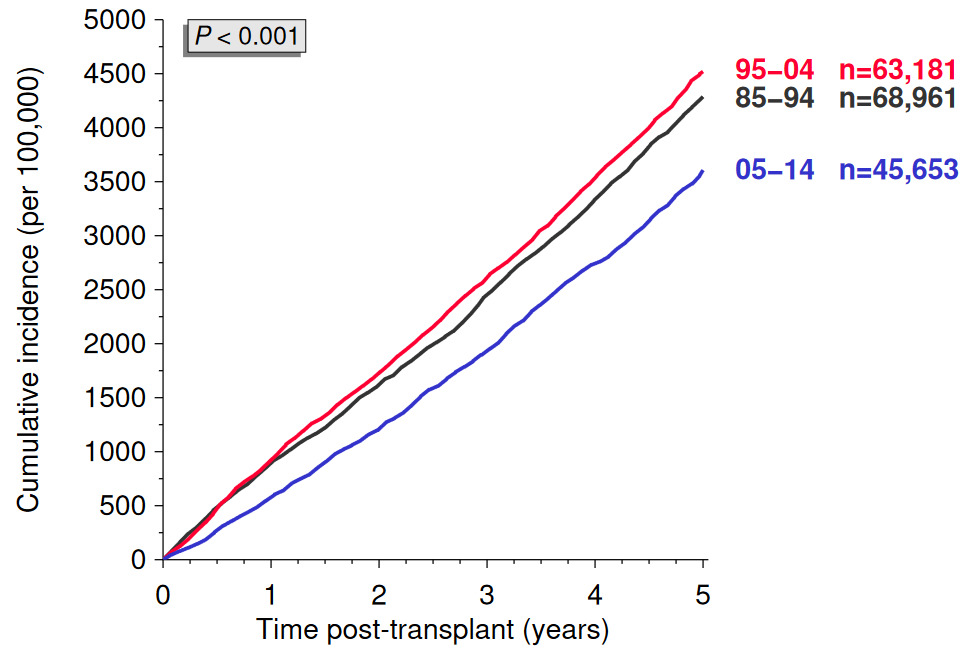Development of early-onset cancer incidence in 14- to 49-year-old kidney transplant recipients over the last 30 years – A collaborative transplant study report
Christian Unterrainer1, Christian Morath2, Klemens Budde3, Axel Roers1, Hien Tran1.
1Institute of Immunology, Heidelberg University Hospital, Heidelberg, Germany; 2Department of Nephrology, Heidelberg University Hospital, Heidelberg, Germany; 3Medizinische Klinik mit Schwerpunkt Nephrologie und Internistische Intensivmedizin, Charité – Universitätsmedizin Berlin, Berlin, Germany
Introduction: According to a publication in BMJ Oncology 2023 by Zhao et al., incidence and deaths of early-onset cancers have substantially increased globally between 1990 and 2019. We asked whether this increase would also be applied to kidney transplant recipients who are known to have an overall increased risk of developing malignant neoplasms.
Methods: We analyzed data of 177,795 patients with 19,909 primary cancers from 309 transplant centers reported to the Collaborative Transplant Study. 14- to 49-year-old recipients of first kidney-only transplants performed between 1985 and 2014 were included. Only centers that confirmed complete cancer reporting were included in the analysis. 5-year cancer occurrence was the primary endpoint. Cumulative incidence per 100.000 person-years stratified by transplant period was calculated using SAS 9.4. Recipients were stratified by time of transplantation into three decades: 1984–1994, 1995–2004 and 2005–2014.
Results: Although the average recipient age increased from 1985 up to 2014, the cancer incidence shows no clear trend. From the first decade to the second, there is an overall increase in incidences, but towards the third decade, there is a decline even below the incidence of the first decade (Figure 1).
Therefore, for our transplant population, we cannot confirm a continuous increase in early-onset cancer, especially not in the categories highlighted by Zhao et al., namely breast, tracheal, bronchus and lung, and colorectal cancers (Figure 2).
Conclusion: Although there have been reports on alarming trends in early-onset cancer worldwide, our analyzed kidney transplant population showed a rather complex dynamic of development over 3 decades. Overall cancer incidence increased from the first to the second decade, but in the third decade the cancer incidence decreased. Further analyses targeting immunosuppressive medication, extent of post-transplant care and other influencing factors are needed.
Figure 1. Kaplan-Meier analysis of first kidney-only transplant recipients aged 14 to 49 transplanted between 1985 and 2014 stratified by transplant year.

Figure 2. Kaplan-Meier analysis of first kidney-only transplant recipients aged 14 to 49 transplanted between 1985 and 2014 stratified by transplant year and different types of malignant neoplasms. (A) Breast cancer was analyzed for females only.

[1] Cancer
[2] early-onset
[3] breast
[4] tracheal
[5] bronchus
[6] lung
[7] malignancy
[8] colorectal
[9] incidence
[10] kidney
